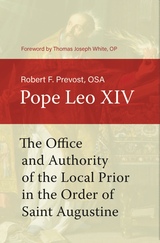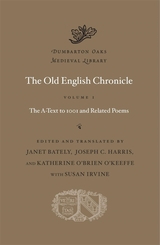7 books about Spanish Empire
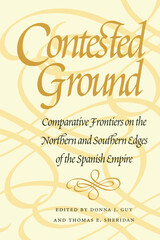
Contested Ground
Comparative Frontiers on the Northern and Southern Edges of the Spanish Empire
Edited by Donna J. Guy and Thomas E. Sheridan
University of Arizona Press, 1998
The Spanish empire in the Americas spanned two continents and a vast diversity of peoples and landscapes. Yet intriguing parallels characterized conquest, colonization, and indigenous resistance along its northern and southern frontiers, from the role played by Jesuit missions in the subjugation of native peoples to the emergence of livestock industries, with their attendant cowboys and gauchos and threats of Indian raids. In this book, nine historians, three anthropologists, and one sociologist compare and contrast these fringes of New Spain between 1500 and 1880, showing that in each region the frontier represented contested ground where different cultures and polities clashed in ways heretofore little understood. The contributors reveal similarities in Indian-white relations, military policy, economic development, and social structure; and they show differences in instances such as the emergence of a major urban center in the south and the activities of rival powers. The authors also show how ecological and historical differences between the northern and southern frontiers produced intellectual differences as well. In North America, the frontier came to be viewed as a land of opportunity and a crucible of democracy; in the south, it was considered a spawning ground of barbarism and despotism. By exploring issues of ethnicity and gender as well as the different facets of indigenous resistance, both violent and nonviolent, these essays point up both the vitality and the volatility of the frontier as a place where power was constantly being contested and negotiated.
[more]
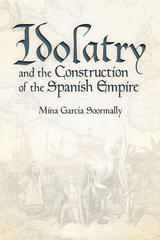
Idolatry and the Construction of the Spanish Empire
Mina García Soormally
University Press of Colorado, 2018
An ethnohistory on the spiritual and governmental conquest of the indigenous people in colonial Mexico, Idolatry and the Construction of the Spanish Empire examines the role played by the shifting concept of idolatry in the conquest of the Americas, as well as its relation to the subsequent construction of imperial power and hegemony.
Contrasting readings of evangelization plays and chronicles from the Indies and legislation and literature produced in Spain, author Mina García Soormally places theoretical analysis of state formation in Colonial Latin America within the historical context. The conquest of America was presented, in its first instances, as a virtual extension of the Reconquista, which had taken place in Spain since 711, during which Spaniards fought to build an empire based in part on religious discrimination. The fight against the “heathens” (Moors and Jews) provided the experience and mindset to practice the repression of the other, making Spain a cultural laboratory that was transported across the Atlantic Ocean.
Idolatry and the Construction of the Spanish Empire is a wide-ranging explication of religious orthodoxy and unorthodoxy during Spain’s medieval and early modern period as they relate to idolatry, with analysis of events that occurred on both sides of the Atlantic. The book contributes to the growing field of transatlantic studies and explores the redefinition that took place in Europe and in the colonies.
Contrasting readings of evangelization plays and chronicles from the Indies and legislation and literature produced in Spain, author Mina García Soormally places theoretical analysis of state formation in Colonial Latin America within the historical context. The conquest of America was presented, in its first instances, as a virtual extension of the Reconquista, which had taken place in Spain since 711, during which Spaniards fought to build an empire based in part on religious discrimination. The fight against the “heathens” (Moors and Jews) provided the experience and mindset to practice the repression of the other, making Spain a cultural laboratory that was transported across the Atlantic Ocean.
Idolatry and the Construction of the Spanish Empire is a wide-ranging explication of religious orthodoxy and unorthodoxy during Spain’s medieval and early modern period as they relate to idolatry, with analysis of events that occurred on both sides of the Atlantic. The book contributes to the growing field of transatlantic studies and explores the redefinition that took place in Europe and in the colonies.
[more]
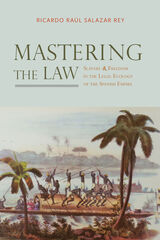
Mastering the Law
Slavery and Freedom in the Legal Ecology of the Spanish Empire
Ricardo Raúl Salazar Rey
University of Alabama Press, 2020
Explores the legal relationships of enslaved people and their descendants during the sixteenth and seventeenth centuries in Spanish America
Atlantic slavery can be overwhelming in its immensity and brutality, as it involved more than 15 million souls forcibly displaced by European imperialism and consumed in building the global economy. Mastering the Law: Slavery and Freedom in the Legal Ecology of the Spanish Empire lays out the deep history of Iberian slavery, explores its role in the Spanish Indies, and shows how Africans and their descendants used and shaped the legal system as they established their place in Iberoamerican society during the seventeenth century.
Ricardo Raúl Salazar Rey places the institution of slavery and the people involved with it at the center of the creation story of Latin America. Iberoamerican customs and laws and the institutions that enforced them provided a common language and a forum to resolve disputes for Spanish subjects, including enslaved and freedpeople. The rules through which Iberian conquerors, settlers, and administrators incorporated Africans into the expanding Empire were developed out of the need of a distant crown to find an enforceable consensus. Africans and their mestizo descendants, in turn, used and therefore molded Spanish institutions to serve their interests.Salazar Rey mined extensively the archives of secular and religious courts, which are full of complex disputes, unexpected subversions, and tactical alliances among enslaved people, freedpeople, and the crown.
The narrative unfolds around vignettes that show Afroiberians building their lives while facing exploitation and inequality enforced through violence. Salazar Rey deals mostly with cases originating from Cartagena de Indias, a major Atlantic port city that supported the conquest and rule of the Indies. His work recovers the voices and indomitable ingenuity that enslaved people and their descendants displayed when engaging with the Spanish legal ecology. The social relationships animating the case studies represent the broader African experience in the Americas during the sixteenth and seventeenth centuries.
Atlantic slavery can be overwhelming in its immensity and brutality, as it involved more than 15 million souls forcibly displaced by European imperialism and consumed in building the global economy. Mastering the Law: Slavery and Freedom in the Legal Ecology of the Spanish Empire lays out the deep history of Iberian slavery, explores its role in the Spanish Indies, and shows how Africans and their descendants used and shaped the legal system as they established their place in Iberoamerican society during the seventeenth century.
Ricardo Raúl Salazar Rey places the institution of slavery and the people involved with it at the center of the creation story of Latin America. Iberoamerican customs and laws and the institutions that enforced them provided a common language and a forum to resolve disputes for Spanish subjects, including enslaved and freedpeople. The rules through which Iberian conquerors, settlers, and administrators incorporated Africans into the expanding Empire were developed out of the need of a distant crown to find an enforceable consensus. Africans and their mestizo descendants, in turn, used and therefore molded Spanish institutions to serve their interests.Salazar Rey mined extensively the archives of secular and religious courts, which are full of complex disputes, unexpected subversions, and tactical alliances among enslaved people, freedpeople, and the crown.
The narrative unfolds around vignettes that show Afroiberians building their lives while facing exploitation and inequality enforced through violence. Salazar Rey deals mostly with cases originating from Cartagena de Indias, a major Atlantic port city that supported the conquest and rule of the Indies. His work recovers the voices and indomitable ingenuity that enslaved people and their descendants displayed when engaging with the Spanish legal ecology. The social relationships animating the case studies represent the broader African experience in the Americas during the sixteenth and seventeenth centuries.
[more]
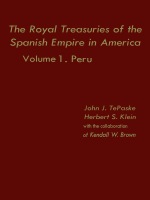
The Royal Treasuries of the Spanish Empire in America
Vol. 1: Peru
John J. Tepaske and Herbert S. Klein, editors
Duke University Press, 1982
The Royal Treasuries of the Spanish Empire in America provides records of Spanish colonial treasuries of various New World administrative centers. In this volume, the fourth in the series, the authors have compiled quantitative date on the fiscal structure of the presidency of Quito that will be an invaluable source for reconstructing the economic, political, and social history of eighteenth-century Ecuador.
[more]
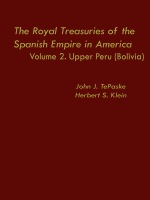
The Royal Treasuries of the Spanish Empire in America
Vol. 2: Upper Peru (Bolivia)
John J. Tepaske and Herbert S. Klein, editors
Duke University Press, 1982
The Royal Treasuries of the Spanish Empire in America provides records of Spanish colonial treasuries of various New World administrative centers. In this volume, the fourth in the series, the authors have compiled quantitative date on the fiscal structure of the presidency of Quito that will be an invaluable source for reconstructing the economic, political, and social history of eighteenth-century Ecuador.
[more]
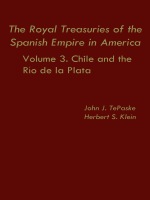
The Royal Treasuries of the Spanish Empire in America
Vol. 3: Chile and Rio de la Plata
John J. Tepaske and Herbert S. Klein, editors
Duke University Press, 1982
The Royal Treasuries of the Spanish Empire in America provides records of Spanish colonial treasuries of various New World administrative centers. In this volume, the fourth in the series, the authors have compiled quantitative date on the fiscal structure of the presidency of Quito that will be an invaluable source for reconstructing the economic, political, and social history of eighteenth-century Ecuador.
[more]

The Royal Treasuries of the Spanish Empire in America
Vol. 4, Eighteenth-Century Ecuador
Alvaro Jara and John Jay TePaske, eds.
Duke University Press
The Royal Treasuries of the Spanish Empire in America provides records of Spanish colonial treasuries of various New World administrative centers. In this volume, the fourth in the series, the authors have compiled quantitative date on the fiscal structure of the presidency of Quito that will be an invaluable source for reconstructing the economic, political, and social history of eighteenth-century Ecuador.
[more]
READERS
Browse our collection.
PUBLISHERS
See BiblioVault's publisher services.
STUDENT SERVICES
Files for college accessibility offices.
UChicago Accessibility Resources
home | accessibility | search | about | contact us
BiblioVault ® 2001 - 2025
The University of Chicago Press




